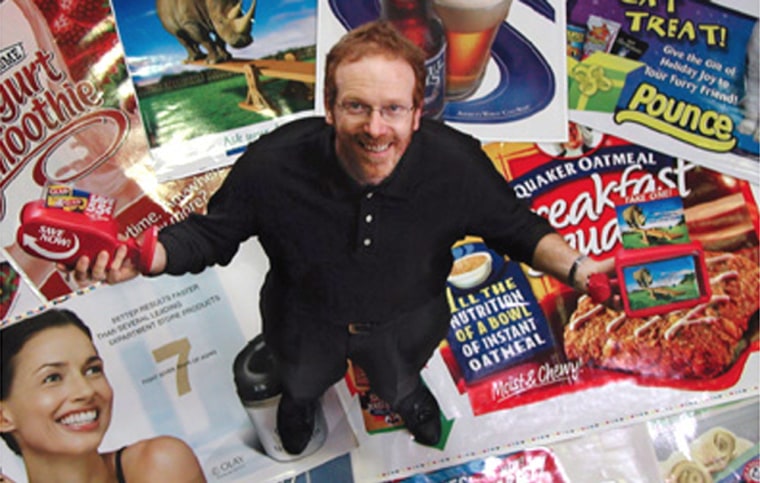From an office just behind the train station here in central New Jersey, a small company is aiming to make a big name for itself in the already congested and competitive advertising marketplace.
Floorgraphics has developed an innovative form of in-store marketing dubbed “floor ads.” These six square foot billboards placed on supermarket or store floors aim to coax a shopper to look on shelves for a product — such as a particular brand of toothpaste — after seeing an advertisement for it on the floor of the store.
“Floor ads are like speed bumps,” Richard Rebh, CEO of Floorgraphics, explains. “Shoppers slow down and decide to buy something they may not have noticed in the first place.”
The fast-growing company Rebh started with his brother counts large consumer-products firms like Procter & Gamble, Kellogg's and Unilever among its client base, and it has certainly captured the attention of the business community. The company also says it holds a patent on the process of making the ads, which are designed to stay firmly stuck to the floor and withstand the constant trampling.
In 2003, Ernst & Young LLP New Jersey named Richard Rebh a finalist of its 2003 Entrepreneur of the Year program. And with revenue growing from $2 million in fiscal 1998 to $62 million in fiscal 2002, Floorgraphics boasts a number 11 ranking in the Inc. 500 survey of America’s fastest-growing private companies, rising from 39 in 2002.
The idea for “floor ads” came in 1997 when Richard, who until then had worked as a marketing executive in Silicon Valley, joined his brother George, a graphic artist, to develop a plan to market floor-based marketing. In March 1998, the brothers closed a deal with K-Mart, their first national client. Today the 80-employee firm boasts 10,000 retail clients nationwide.
But success hasn’t been an easy road for Floorgraphics.
The firm has been locked in a bitter battle with the retail advertising unit of Rupert Murdoch's News Corp, a multi-billion dollar media giant and a newcomer in the floor-advertising business. The David-and-Goliath clash has led to lawsuits, and Floorgraphics claims that the Murdoch unit is using unfair business practices. At present, Floorgraphics still controls about 80 percent of the market, but its dominance is due to sheer determination, Rebh said.
“When it comes to News Corp., we’re on a mission to survive,” said Rebh. “News Corp. is a very aggressive competitor and even though we did almost $70 million in revenue in 2003 I think we’d have been a $150 million company if it wasn’t for the competition with News Corp.”
The theory behind floor ads is “doing business at the buying moment,” says Rebh, who cites a study that shows 73 percent of shoppers’ brand purchase choices are made at the point of sale. “A car ad on television has to persuade you to go to a car dealership, but we only have to get you to change your mind at the point of purchase,” he explained.
“The idea is you get to have the last word in advertising and you can contract with retailers for the exclusive right to place floor ads in their stores,” added Rebh. The ads are placed after retailers agree to give Floorgraphics the right to sell the floor space for a slice of the profits from the ads.
Companies that agree to use the advertising spaces — including consumer products firms like Campbell Soup and Kraft Foods — get exclusive rights to advertise in a store. The firm’s list of stores includes household names like A&P, Safeway, Food Lion, ShopRite and SuperValu.
Odor-ads next?
Rebh plans to expand his reach into international markets, and new floor ads, including animation, sound and odors, are in development, but not everyone sees the value of floor-based advertising.
Dr. Robert Passikoff, president of Brand Keys, a New York brand and customer-loyalty consulting company, sees it as a variation on a familiar theme.
Floor ads might work for showcasing new products, Passikoff noted, but for most consumers they are yet another voice in a growing cacophony of advertising information that inundates consumers every day.
“The acid test is whether you see increased profitability,” said Passikoff. “If you can show that on a consistent basis, that’s great, but if not it’s just another brand clamoring for attention in an already crowded media ecology.”
